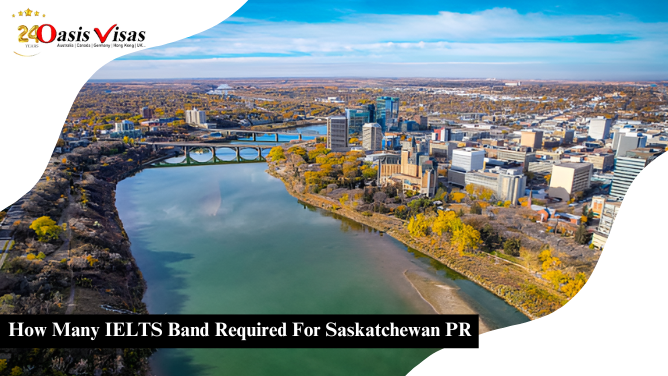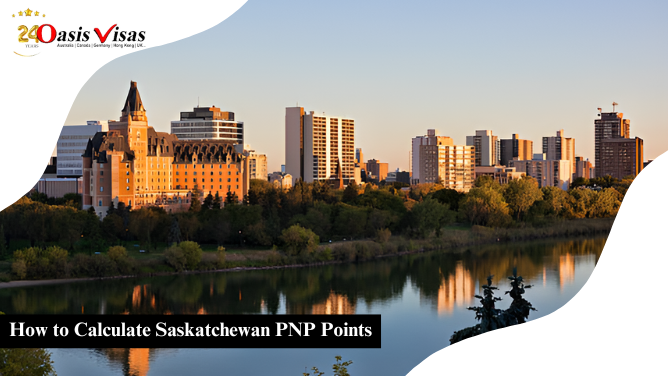
If you’re thinking about how to get PR in Saskatchewan after study, believe you, you’re not alone. Saskatchewan has many options for international students willing to stay back in the country after their study course. Known for a healthy job market, amiable communities, and relatively easy immigration rules, Saskatchewan has emerged as a hot destination for scholars across the world. In this article, we will examine the procedures, requirements, and opportunities required to get permanent residency in Saskatchewan.
Why Saskatchewan as a PR Destination?
Saskatchewan is an essential part of the Provincial Nominee Program of Canada, which enables provinces to nominate applicants for permanent residency founded on the skills, work experience, and the applicant’s intent to settle in the province. Sask’s programs prove particularly alluring to international students, which are crafted to exactly meet their requirements. Saskatchewan is one of the most sought-after destinations for PR abroad today High demand for skilled professionals in the province, Affordability and Rapid processing for PR applications. To understand a little better how to achieve PR in Saskatchewan upon graduation, one needs to become familiar with the SINP and student-friendly categories.
Main Streams of PR in Saskatchewan
The main category that leads to PR in Saskatchewan comes through the Saskatchewan Experience Category, which outlines list students from any Saskatchewan institution. The qualifications for this program are to have at least one year of post-secondary study from a learning institution that is designated in Saskatchewan, as well as possessing a valid post-graduate work permit, with work experience in a skill learnt in the field of study of at least six months. Further, the student should present at least a minimum CLB level 4.
It fits very well with Express Entry Sub-Category for Saskatchewan-connected graduates with experience at work. With the developing of an Express Entry profile and the meeting of requirements set by Saskatchewan in terms of skill and occupation, graduates can secure a nomination through SINP. The nomination under SINP would give them an extensive rise in their Express Entry CRS score and enhances their prospect for permanent residency.
The Occupations In-Demand Sub-Category is an alternative process for those trained in high demand fields. This category does not need a job offer, but it does require a post-secondary credential and work experience in the occupation in question.
How to become PR in Saskatchewan after studying
To effectively apply for PR in Saskatchewan, a person must start with graduating from a Designated Learning Institution in Saskatchewan. Programs eligible under SINP pathways include programs that are at least one year; after graduation, a post-graduate work permit is submitted, which will then open avenues for working in Saskatchewan and allow one to obtain local experience required for one to be qualified and thus allowed to apply for PR.
To get employment that is related to the area of study. Relevant work experience, for six months at least, serves to support the application. On achieving the two, one can apply under the SINP Student Subcategory or any other appropriate category. A complete and correct application must be submitted in not to delay or cancel the application process. Once the nomination is received from the province, the applicants should submit their applications to IRCC for final authorization for PR.
Benefits with PR Status in Saskatchewan
You gain many accessions to become a permanent resident in Saskatchewan. One has access to universal health care, social benefits, and education subsidies with PR. You will be at liberty to live and work anywhere in Saskatchewan; you have the right to sponsor your family members for immigration. Furthermore, PR status as sets up an easy pathway to Canadian citizenship, long-term stability, and even greater benefits.
Tips for A Successful PR Application
If you want to increase the chances of getting the success, planning is important. Start working on PR preparation even when you are studying, so as to have known the programs and institutions recognized by the province. Equally important is to get local work experience and to improve your language proficiency. Keeping abreast with changes in requirements of SINP would also help make a lot of difference. Useful professional networking within your profession would also work in your favour. Due to the technical nature of immigration procedures, advice might be sought from consultants. Errors can easily lead to the denial of applications.
Knowing how to get PR in Saskatchewan upon graduation requires a correction between education, work experience, and strategies for application with the particular province’s requirements. A sound plan and its execution will guide you through.
Challenges of the Application Process for PR
With clearer paths to PR, bigger barriers to overcome could be the minimum experience requirements or developing a new language. To get there you would be able to accumulate relevant part-time work experience while in college and classes or practice can help develop your language abilities. Networking in an industry may take you to the kind of job that is a good fit for your application.
Getting PR in Saskatchewan after study is quite achievable if done properly. Immigrant policies that have always been migrated friendly and structured pathways have made it clear the route for international graduates to become permanent residents and contribute meaningfully. Using programs like SINP and thorough preparation, you can make this aspiration of settling down in Saskatchewan a real affair.








